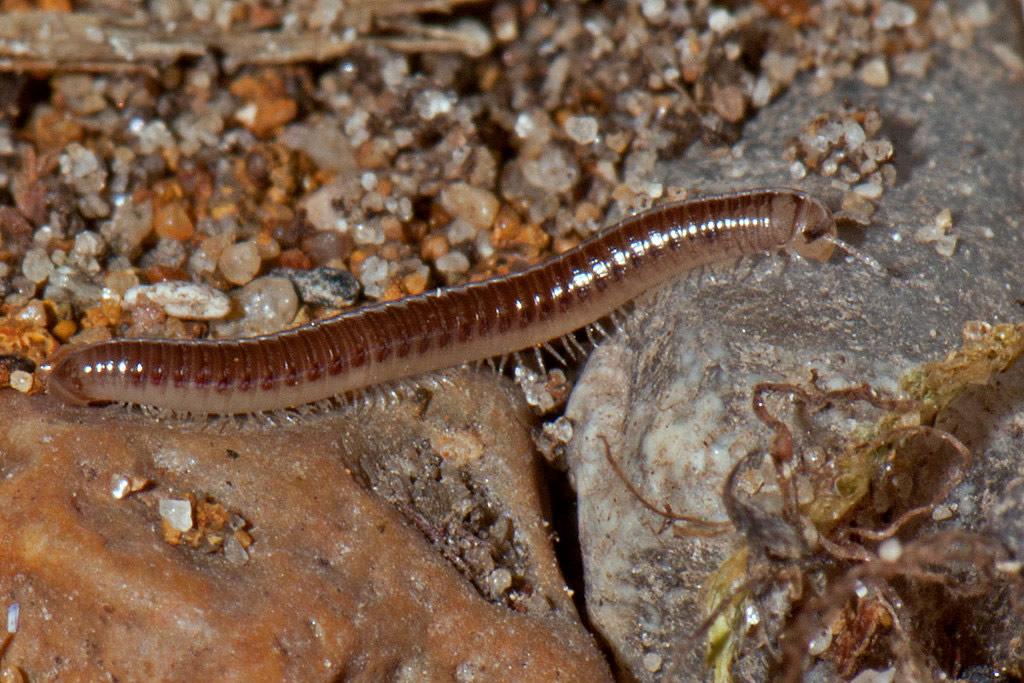Cylindroiulus latestriatus (Curtis, 1845)
Synonyms
Cylindroiulus latistriatus
According to Read & Enghoff (2023) the specific name should be spelt latistriatus, but the former spelling is currently retained here to avoid confusion.
Status:
GB IUCN status: Least Concern
ID Difficulty
Identification
This millipede, lacking a projecting telson, is superficially similar in appearance to the closely related C. britannicus (and also the scarce C. parisiorum and C. truncorum).
Although they differ subtly in morphology, these four species are only reliably identified by dissection of adult specimens, ideally males.
This species is a known host for the ectoparasitic fungus Rickia laboulbenioides (Gregory, 2021). See image.
Distribution
A widespread and common species all around the coasts of Britain and Ireland, this animal is sometimes encountered inland, most commonly in the East Anglian brecklands.
It has an Atlantic distribution from Portugal to Norway and as a synanthrope it occurs eastwards to Russia (Kime, 1999). Outside of Europe it has been introduced to places as remote as Easter Island and Antarctica (Blower, 1985).
Habitat
Analysis of the recording scheme habitat data suggests a very strong association with maritime habitats and especially with dune systems. The species is very strongly associated with sandy soils hence its occurrence in Breckland. Although not evident from the habitat analysis, many of the other inland records relate to synanthropic populations. Elsewhere in Europe the species shows a similar marked association with sand. It mainly occurs in dune systems and coastal grassland along the Atlantic and North Sea coasts but in Belgium has been found in scrub and woodland as well as in arable land (Kime, 2004).
Phenology
Adult females are present throughout the year as, although males die after reproduction, the females survive for three or more years after reaching maturity (Blower, 1985). Blower & Gabbutt (1964) found that animals in a Devon woodland took two years to reach maturity but Desmukh (in Cotton & Miller, 1974) found that animals on sand dunes in Scotland required three years.
This species account is based on Lee (2006).
Links
MilliBase - Global catalogue of Millipedes: https://millibase.org/aphia.php?p=taxdetails&id=151194







